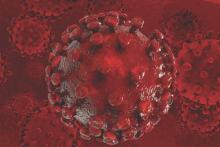Use of pre-exposure prophylaxis (PrEP) by homosexual men and transgender women, even those who already have sexually transmitted infections (STIs), can significantly decrease the likelihood of contracting or spreading STIs among their partners, particularly HIV.
This is according to a prospective study, known as the Demonstration or “Demo” study, published by JAMA Internal Medicine, which examined HIV incidence rates among homosexual men and transgender women in San Francisco, Miami, and Washington for 48 weeks, between Oct. 1, 2012 and Jan. 23, 2014, with a final follow-up on Feb.10, 2015. (2015 Nov 16. doi: 10.1001/jamainternmed.2015.4683)
“Men who have sex with men [MSM] account for more than two-thirds of new HIV infections in the United States and are the only risk group in whom infection rates are rising,” says the study, led by Dr. Albert Y. Liu of the San Francisco Department of Public Health, adding that previous work in this field – namely, the 2010 iPrEx (Pre-Exposure Prophylaxis Initiative) trial – found that tenofovir disoproxil fumarate and emtricitabine led to an overall 44% reduction in HIV acquisition among the aforementioned demographic groups.
A total of 557 participants enrolled, of which 437 (78.5%) were also measured through 48 weeks of follow-up. Participants were given access to a PrEP regimen of daily, oral tenofovir disoproxil fumarate and emtricitabine during clinical visits at 4, 12, 24, 36, and 48 weeks. HIV and STI testing and clinical monitoring were also done during these follow-up visits.
Eligible individuals had to be male at birth, at least 18 years old, have a negative rapid HIV antibody test result at enrollment and a negative fourth-generation antibody-antigen test result at screening, creatinine clearance rate of at least 60 mL/min, and a urine dipstick test with negative or trace findings of protein.
Additionally, all participants were asked to report if they had engaged in condomless anal sex with at least two male or transgender female partners; at least two episodes of anal sex with at least one HIV-infected partner; or sex with a male or transgender female partner and having a diagnosis of syphilis, rectal gonorrhea, or chlamydia in the 12 months prior to enrollment. During the study period, PrEP was discontinued for subjects who underwent seroconversion, and for those who received counseling, partner services, and linkage to HIV primary care.
Of the original 557 who enrolled, 294 (52.8%) ultimately had their tenofovir diphosphate levels measured. Between 80.0% and 85.6% had protective levels of at least four doses per week, indicating high protective levels. However, significant disparity was seen in subjects who were African American (56.8%; P = .03) and those living in the Miami area (65.1%; P less than .01); subjects who had at least two condomless anal sex partners (88.6%; P = .01) and those with stable housing (86.8%; P = .02) were more likely to have high protective levels. Furthermore, the mean number of anal sex partners declined from 10.9 at baseline to 9.3 at the 48 weeks’ follow-up, but the rate of participants engaging in condomless receptive anal sex remained at 65.5% at baseline and at follow-up at 48 weeks.
Regarding acquisition of HIV, only two individuals contracted HIV over the 48 weeks of study, leading to an incidence rate 0.43/100 person-years (95% confidence interval, 0.05-1.54). This is significantly lower than the 90/100 person-years incidence rate of STIs measured by participants at baseline. Both individuals who contracted HIV had tenofovir diphosphate levels indicating that they took fewer than two doses of PrEP per week, and therefore had lower protective levels.
Among the 557 enrolled participants, 25 (4.5%) had no follow-up visits, whereas 383 (68.8%) completed all five visits. Total follow-up was 481 person-years, and after researchers adjusted for each individual site, prior PrEP knowledge and reporting of condomless receptive anal sex at baseline were associated with being retained in the study.
“Adherence was higher among those participants with more reported risk behaviors,” Dr. Liu and his coauthors conclude, adding that “These results provide support for expanding PrEP implementation in MSM in similar clinical settings and highlight the urgent need to increase PrEP awareness and engagement and to develop effective adherence support for highly affected African American and transgender populations.”
To that end, a separate study, also published by JAMA Internal Medicine, looked at “real-world PrEP use” by young, homosexual black men in Chicago. According to a JAMA press release accompanying the release of the uConnect study, “Young black men who have sex with men (YBMSM) are the only group in the United States where HIV incidence has increased over the past decade with effective clinic-based HIV preventions that target YBMSM virtually nonexistent.” (JAMA Intern Med. Nov 16. doi: 10.1001/jamainternmed.2015.6536)


